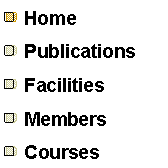

|
We study motor control and motor learning with applications in motor rehabilitation, Hybrid Brain Computer Interface and neuroprostheses. |

|
The Hybrid BCI Lab |

|
Motion primitives and the point-of-no-return The ability to suppress an undesired response or to abruptly bring to an end an ongoing action has a major impact on practically every aspect of our daily lives. For this reason, the act of movement inhibition and termination has been the subject of many psychophysical, imaging and electrophysiological studies. We have shown that subjects who scribbled freely looking for the position of an invisible target, and were requested unexpectedly to impede movement, have generated a path whose figural properties after the ‘stop’ cue were part of a repetitive geometrical pattern. The probability of completing a pattern after the 'stop' cue was found to correlate with the relative advance in the geometrical plan rather than the amount of time that had elapsed from the pattern initiation. The findings suggested that the "point of no return" phenomenon in humans is not merely a manifestation of execution process constraints such as the inability to swiftly impede muscle activity (low level constraints) but is also subject to the planning process constraints such as the completion of a kinematic plan (high level constraints). We suggested that "point of no return" could serve as a new operative definition of motion primitives. We are currently studying the syntactical rules engaged in the spatiotemporal concatenation of the motion primitives into smooth, complex shapes in 2D and 3D. |
|
Motor imagery based BCI Many works have attempted to unravel the EEG neural correlates of the patients’ intended cognitive / motor action for the rehabilitation and therapy of stroke, ALS and locked-in syndrome patients. Current research exploits the latest advances in emerging technologies such as Machine Learning and artificial Intelligence and relies on various preprocessing methods (e.g., Non negative matrix factorization, Independent Component Analysis, blind Source Separation, etc.) to increase signal-to-noise ratio and on feature extraction schemes to reduce the high dimensionality inherent in the noisy data and extract spatiotemporal features which could be used for effective control of BCI. In spite of the exciting advance in the field, BCI systems are still only “half on-line”, i.e., they cannot immediately translate the subject’s intended move into an overt action. The reasons include, in part, heavy computational loads and the need to augment trials in order to increase the poor EEG signal-to-noise ratio. We are currently devising a conceptually new, multi modal BCI system which will allow on-line detection of planned three dimensional (3D) hand movements in space. To that end, we introduce new experimental paradigms incorporating multi modal data and devise multi-way dynamic analysis techniques.
|
|
Advanced neuro imaging and neural modeling across the lifespan The development time frame of ageing-associated cognitive dysfunction such as Alzheimer’s disease (AD) is decades long. Studies in cognitively healthy middle age people at high risk of developing AD have shown structural and functional brain changes that are observed in AD. Long term studies of cognition and behavior have shown performance decline in subjects that later develop dementia, with the start of the decline predating the clinical symptoms by 2-3 decades. It is hypothesized that a number of environmental factors would prevent or delay the development of AD in later life. We are currently assessing the behavioral and neural correlates of cognitive ability using various imaging, neuropsychological and motor psychophysics techniques in a large cohort in conjunction with the collection of information associated with each study participant’s lifestyle/dietary habits with various psychological factors, socioeconomic status, blood analysis and genotyping. The data is used to inform structurally and dynamically realistic large scale neural network models allowing thorough investigation into how neuro anatomical data can be used to inform plausible neural models.
|